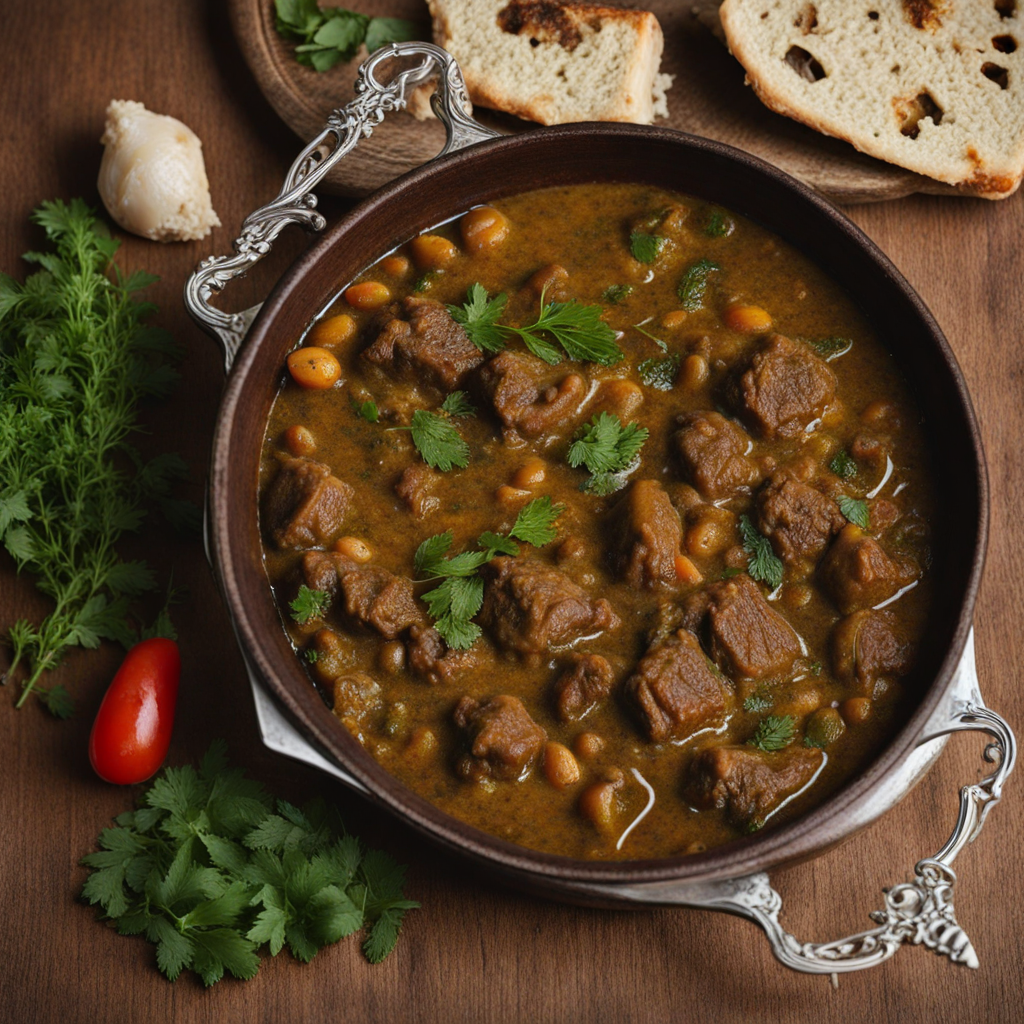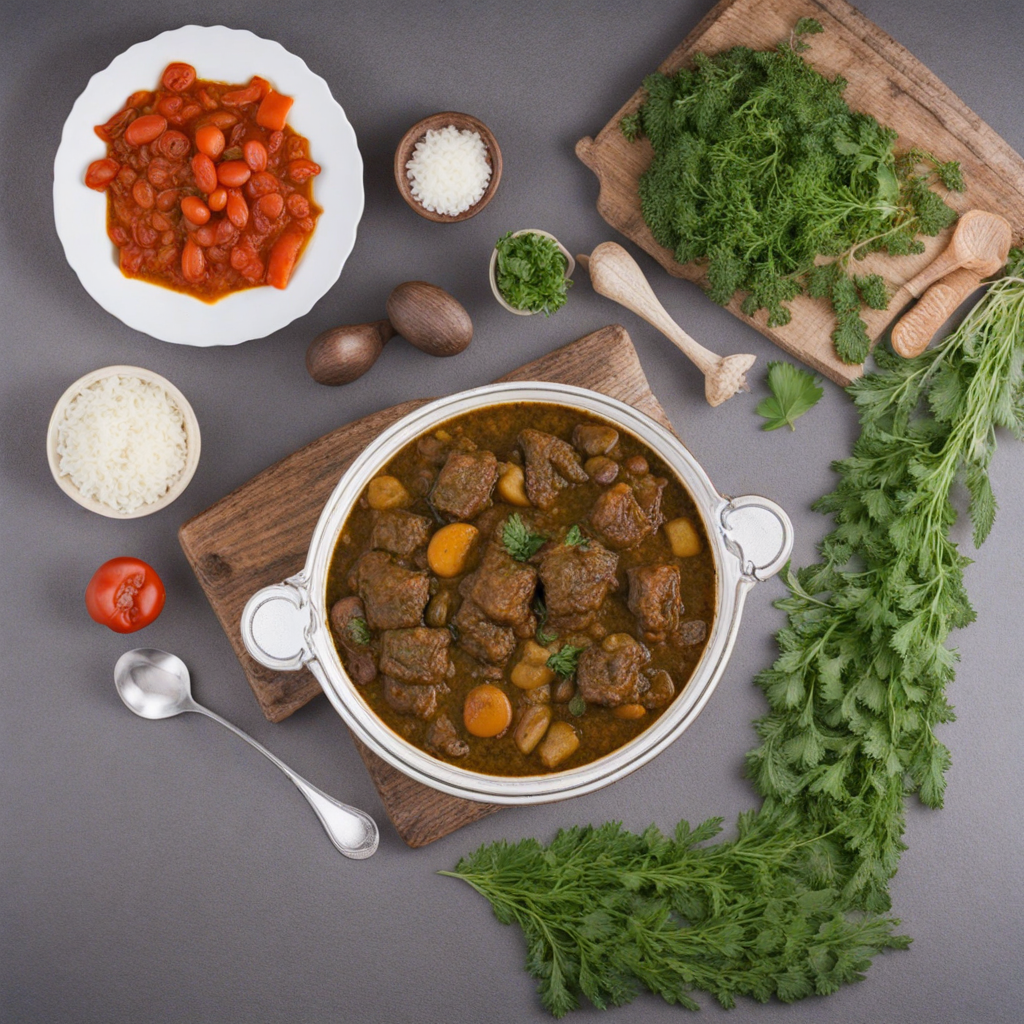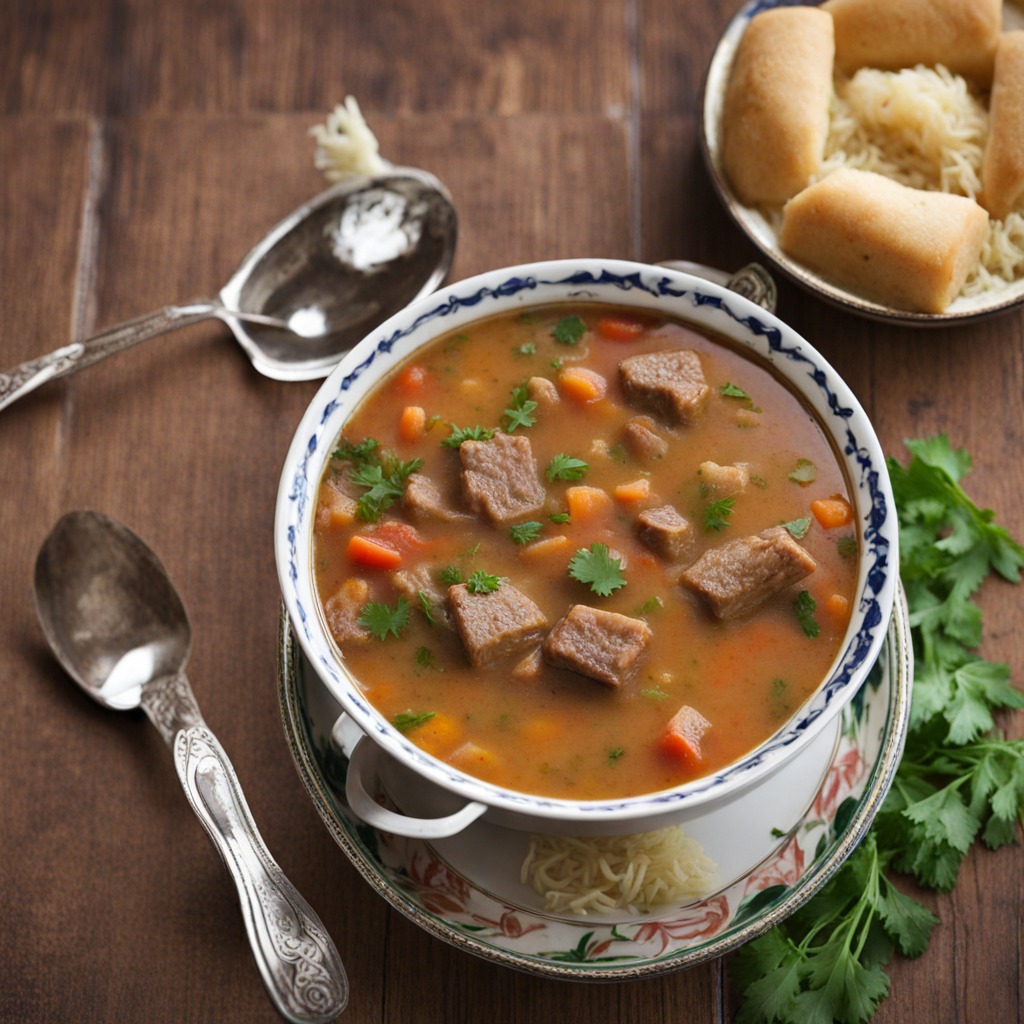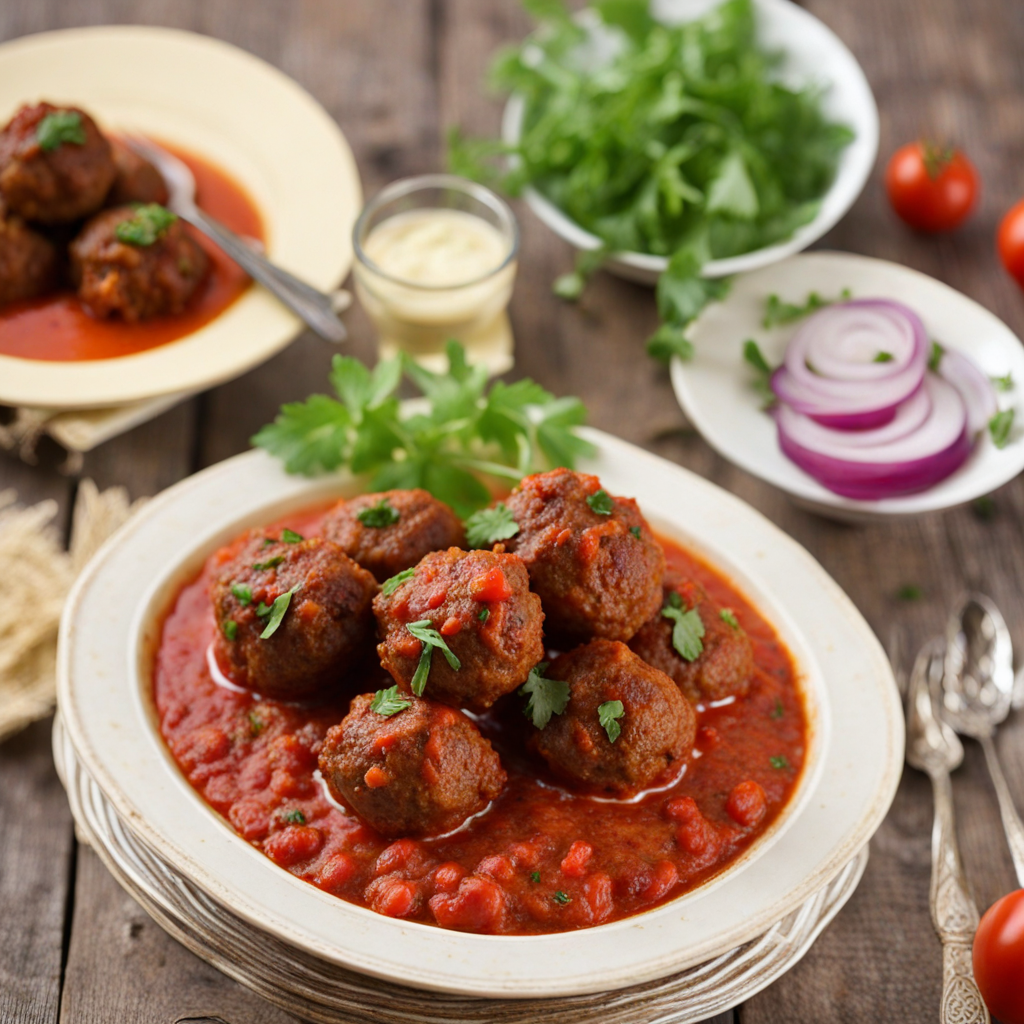Qorma Sabzi
Qorme Sabzi, a beloved dish in Afghan cuisine, is a savory herb stew that showcases the rich culinary traditions of Afghanistan. Its name translates to "herb stew," which is fitting given that the dish is primarily made with a variety of aromatic greens. Qorme Sabzi is not only a staple meal in Afghan households but also a dish that reflects the communal spirit of Afghan culture, often served during family gatherings and special occasions. Historically, Qorme Sabzi has roots in the ancient agricultural practices of the region, where the cultivation of herbs and vegetables has been integral to Afghan life. The dish likely evolved over centuries, influenced by the diverse cultures that have traversed through Afghanistan, including Persian, Central Asian, and Indian cuisines. As a result, Qorme Sabzi embodies a fusion of flavors and techniques, making it a unique representation of Afghan culinary heritage. The flavor profile of Qorme Sabzi is both complex and comforting. The dish is characterized by its deep, earthy taste, derived primarily from the blend of sautéed greens and spices. The predominant flavors come from a mix of fresh herbs such as spinach, fenugreek leaves, and parsley, which contribute a vibrant, slightly bitter note. The addition of slow-cooked lamb or beef adds a rich, meaty depth to the stew, while a sprinkle of dried lime (limoo amani) infuses a tangy brightness that cuts through the richness. Overall, the balance of flavors in Qorme Sabzi creates a hearty
How It Became This Dish
Origins of قورمه سبزی The dish known as قورمه سبزی (Qorma Sabzi) has deep roots in Persian cuisine, tracing its origins back to the ancient Persian Empire. While its exact inception is difficult to pinpoint, it is believed that the dish was influenced by a variety of regional cuisines across Central Asia, including Afghanistan, Iran, and the broader Middle Eastern region. The name itself translates to "braised greens," which reflects the dish's primary ingredients: a medley of herbs, meat, and legumes. Traditionally, قورمه سبزی is made with lamb or beef that is slow-cooked with an array of finely chopped greens, such as parsley, cilantro, and fenugreek. These herbs are sautéed to release their flavors and then combined with the meat and other ingredients, such as kidney beans or chickpeas, to create a hearty stew. The inclusion of dried limes (limoo amani) adds a distinctive tartness, elevating the dish's complexity. This combination of flavors is emblematic of the rich culinary traditions found across the region. \n Cultural Significance The cultural significance of قورمه سبزی in Afghan society cannot be overstated. It is often regarded as a national dish and is a staple at family gatherings, weddings, and festive occasions. The preparation of قورمه سبزی is frequently seen as a communal activity, with families coming together to chop herbs and prepare the meal, reinforcing social bonds and cultural ties. In many Afghan households, the dish serves as a symbol of hospitality. When guests arrive, it is customary to offer them a steaming bowl of قورمه سبزی, often accompanied by fluffy white rice known as چلو (Chelo). This practice signifies respect and generosity, as well as the importance of sharing food in Afghan culture. The dish's vibrant green color, derived from the herbs, is also associated with prosperity and growth, making it particularly auspicious for celebrations. \n Development Over Time Over the centuries, قورمه سبزی has evolved, absorbing influences from various cultures and culinary traditions. The dish's adaptability is one of its strengths, allowing it to be tailored to local tastes and available ingredients. For instance, in some regions, cooks may opt for different meats, such as chicken or goat, depending on personal preference or dietary restrictions. Moreover, the rise of globalization and the migration of Afghan communities worldwide have further influenced the preparation and presentation of قورمه سبزی. Afghan diaspora communities have introduced the dish to new audiences, leading to a fusion of flavors and techniques. In places like the United States, the dish may be served with a side of naan or variations of bread, reflecting the local culinary landscape while maintaining its core identity. \n Regional Variations While the essence of قورمه سبزی remains consistent, regional variations exist that showcase the diversity of Afghan cuisine. In urban centers like Kabul, the dish may be prepared with a more refined approach, featuring a greater emphasis on presentation and the use of high-quality ingredients. In contrast, rural areas might favor a more rustic version, where the focus is on hearty, comfort food that nourishes the family. Additionally, some regions might include unique spices or herbs that are locally available, further enriching the dish's flavor profile. For example, in the northern provinces, cooks might incorporate dill or even spinach, enhancing the nutritional value and taste of the stew. These variations highlight how قورمه سبزی serves not just as a meal but as a canvas for regional expression and creativity. \n Modern Interpretations In contemporary Afghan cuisine, قورمه سبزی has found its way into restaurants and homes around the world, often adapted to cater to broader palates. Chefs may experiment with the dish by introducing innovative ingredients or cooking techniques, such as pressure cooking or slow-cooking systems, making it more accessible to those who may not be familiar with traditional methods. Health-conscious adaptations have also emerged, with some opting for leaner meats or plant-based proteins to create vegetarian or vegan versions of قورمه سبزی. This modernization not only reflects changing dietary preferences but also illustrates the dish's resilience and capacity to evolve while remaining deeply rooted in its cultural heritage. \n Conclusion and Legacy As it stands today, قورمه سبزی represents more than just a delicious meal; it embodies the rich tapestry of Afghan history, culture, and identity. Its journey from ancient Persia to the modern dining table is a testament to the enduring nature of culinary traditions, which continue to adapt and thrive in new contexts. Through the lens of قورمه سبزی, one can appreciate the intricate connections between food, family, and culture, revealing how a single dish can encapsulate centuries of history and shared experiences. As Afghan communities around the world gather to enjoy this beloved stew, they not only celebrate their heritage but also share a piece of their identity with those around them. The legacy of قورمه سبزی is not just in its flavors but in the stories and connections it fosters across generations.
You may like
Discover local flavors from Afghanistan







